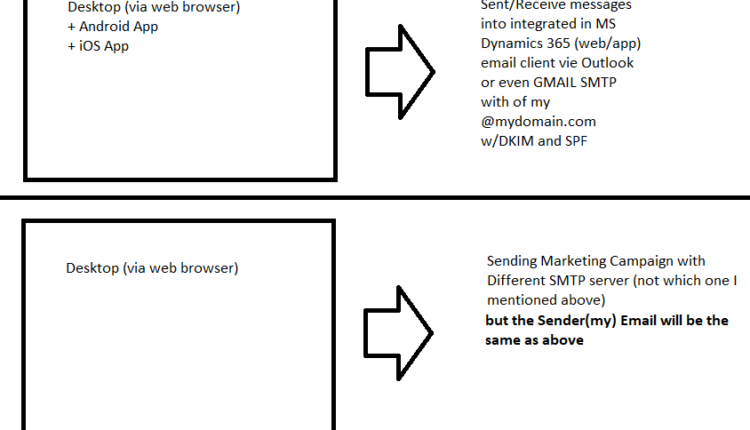Everyone who has sent an email message at least a couple of times faced a situation when your email cannot be delivered to the recipient. It is not particularly important if it is just a single email for your friend or family member. But what if the email impacts a critical business function?
Microsoft Dynamics 365 Marketing allows you to send email campaigns to a large number of recipients. But if you’ve ever sent an email campaign, you quickly realize that it’s almost impossible to send emails to a big audience without having at least some of the emails bounced back. Understanding the reasons and the impact of those bounces on your email reputation is very important to avoid any possible damage to your sending reputation.
To say more having some of the emails bounced may not only impact the person who did not get your email, but may even result in your sending domain or IP addresses being banned, which results in even more undelivered emails.
We can separate two major types of bounces: hard bounces and soft bounces.
Hard bounces: emails that are flat out rejected
In most cases, hard-bounced emails are rejected due to permanent errors, either due to invalidity of the recipient address or even the whole recipient domain. A high percentage of hard-bounced emails in your campaign indicate that your contact list is not that clean and up to date and requires additional attention. In most cases, hard-bounced email addresses are added to the Dynamics 365 Marketing suppression list automatically to avoid sending them to those addresses again.
Some email providers may limit or even block senders with a high amount of invalid contacts, so maintaining your contact list hygiene is essential for preserving your overall sending reputation.
Soft bounces: emails rejected due to a temporary error
Reasons for soft email bounces can vary, but in general, soft-bounced emails indicate a temporary issue with delivery to a specific recipient or domain. Different mail servers provide a variety of bounce error codes, which are usually combined into bounce classes or categories for easier understanding and identification.
The most popular reasons, or categories, of soft bounces include issues with the sending domain reputation, greylisting, email content spam filtering, recipient mailbox full, oversized email attachments, recipient policies, or internal recipient server errors that prevent emails from being delivered.
In most cases, soft bounces are temporary. Resending a soft-bounced email to the recipient is usually enough to get it delivered. But sometimes, when an email is still not delivered after the second or even third attempt, it requires additional attention and understanding of the reason for the bounce.
Keep in mind that those soft-bounced emails that are bounced on a regular basis across different email campaigns may become hard-bounced and suppressed by Dynamics 365 Marketing internally.
To ensure your emails are delivered, always keep an eye on your bounce rates
It is a good idea to keep an eye on your bounce rates alongside your engagement rates. After all, you can’t have engagement if your customers don’t receive your email messages. Keeping your contact list clean and up to date will prevent unnecessary bounces and will keep your email sending reputation high. If you notice that your bounce rates have started to rise, it is a good idea to take a closer look at the reasons for those bounces and make appropriate changes to keep it low.
Next steps and continued learning
For an in-depth look at email bounce categories in Dynamics 365 Marketing, refer to our email bounce categories article. If you are looking to improve marketing results with timely and relevant communications, please visit Dynamics 365 Marketing to learn more and get started.
The post Keep an eye on your email bounce rates in Dynamics 365 Marketing appeared first on Microsoft Dynamics 365 Blog.
